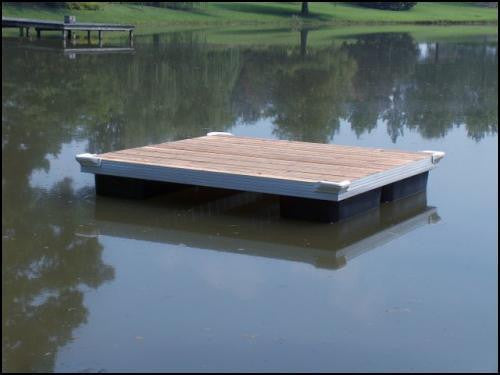Maximizing Your Outdoor Area with Specialized Floating Dock Services
Maximizing Your Outdoor Area with Specialized Floating Dock Services
Blog Article
Upgrade Your Beachfront With Sturdy Floating Docks
Upgrading your waterside with long lasting floating docks can dramatically boost both performance and appearances, giving a functional option for different water activities. With an array of materials readily available, consisting of low-maintenance choices and standard wood, selecting the ideal dock can complement your personal style and meet functional needs.
Advantages of Floating Docks
Floating docks offer a multitude of benefits that improve their appeal for numerous maritime applications. Unlike standard fixed docks, floating docks rise and loss with the trend, guaranteeing consistent ease of access for boats and watercraft no matter of ecological problems.
Additionally, floating docks are less complicated to mount and relocate, offering adaptability for seasonal or temporary usage. Their modular design enables for personalization to fit particular demands, whether for exclusive marinas, household beachfronts, or commercial applications.
In addition, floating docks develop minimal disturbance to the aquatic atmosphere, preserving regional ecosystems and reducing the probability of disintegration. They also offer improved safety and security for customers, as their resilient nature uses a more flexible surface than stiff frameworks.
Furthermore, floating docks can assist in a varied variety of tasks, such as angling, swimming, and leisure boating, making them an important asset for waterfront development. Their adaptability and usefulness make floating docks a recommended choice for a selection of maritime jobs.
Selecting the Right Products
Selecting suitable materials for floating docks is crucial to their long life, performance, and total effectiveness. When picking materials, take into consideration aspects such as environmental exposure, maintenance requirements, and structural stability. Typical materials include wood, plastic, light weight aluminum, and composite choices, each offering distinctive benefits and drawbacks.
Wood, while visually pleasing, requires normal upkeep to avoid rot and degeneration. Pressure-treated wood can enhance resilience, however it might still catch water damages in time. Plastic floats, frequently made from high-density polyethylene, are resistant to corrosion and need marginal upkeep, making them an eye-catching selection for low-maintenance applications.
Aluminum is one more feasible alternative, understood for its strength and light-weight residential properties. It is immune to rust and can hold up against rough weather, although it may be much more pricey than various other products. Composite products combine the very best characteristics of timber and plastic, supplying a low-maintenance and resistant option that resembles the look of timber without the linked drawbacks.
Ultimately, the option of material ought to straighten with the planned usage, ecological factors to consider, and budget restrictions, ensuring a functional and long lasting floating dock that satisfies your specific needs.
Installation Process Overview
The effective installation of a floating dock relies upon careful preparation and execution, ensuring that it runs effectively in its designated environment. The primary step involves assessing website conditions, including water depth, coastline attributes, and prevailing climate patterns, which will educate the dock style and anchoring system.
Adhering to the website evaluation, the next stage is to prepare the floating dock elements. This consists of putting together the framework, safeguarding drifts, and attaching any type of required equipment. It is essential to make certain that all connections are durable and waterproof to stand up to marine problems.
Once the dock is put together, the setup process starts with positioning the dock in the water. This can check my source involve a crane or various other lifting tools, especially for larger frameworks. Appropriate alignment is vital for performance and security.

Upkeep Tips for Durability
Regular maintenance is necessary for guaranteeing the durability and ideal efficiency of a floating dock. To attain this, begin with regular evaluations at the very least twice a year, concentrating on the stability of the dock's framework, including the flotation protection devices and linking hardware. Try to find indicators of wear, corrosion, or damages, and address any type of concerns quickly to prevent additional deterioration.
Cleaning up is an additional vital facet of maintenance. Eliminate particles, algae, and barnacles from the dock's surface to stop unsafe conditions and preserve visual appeal. Make use of a soft brush and a mild detergent to prevent harming the dock's materials.
Furthermore, ensure that the dock is correctly secured and secured to hold up against seasonal changes in water levels and weather. Examine the anchoring system for security and make adjustments as needed.
Enhancing Your Exterior Aesthetic
To create a visually attractive exterior room, including a floating dock can substantially boost the total visual of your waterfront building. Floating docks are not only practical yet can likewise work as a striking prime focus that complements the natural surroundings - floating dock services. Readily available in various materials and layouts, these docks can be customized to match your building's architectural style and landscape
The addition of ornamental components, such as incorporated lighting or trendy railings, additionally raises the dock's visual charm. Think about utilizing natural timber coatings, which blend effortlessly with the setting, or opting for contemporary products like light weight aluminum or composite outdoor decking that offer a sleek, modern appearance.
Purposefully placing planters or seating locations on or around the dock can produce inviting rooms that motivate relaxation and satisfaction of waterfront sights. Furthermore, incorporating shades and textures that integrate with your landscape will develop a cohesive visual throughout your outside location.

Final Thought

Upgrading your waterside with durable floating docks can substantially boost both functionality and aesthetics, supplying a functional service for numerous water tasks. Unlike conventional set docks, floating docks surge and fall with the tide, making certain consistent availability for watercrafts and watercraft regardless of ecological problems.Selecting proper products for floating docks is important to their long life, efficiency, and overall efficiency.As soon as the dock is assembled, the installation process starts with placing the dock in the water.In summary, floating docks deal her response numerous advantages, consisting of flexibility to water level modifications and a range of product alternatives.
Report this page